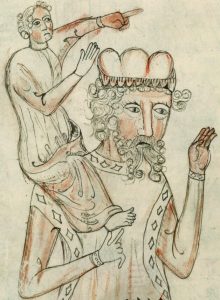Introduction
It is tempting to think, “Why should I reinvent the wheel?”, that is, why should one write something new when someone else wrote something similar better? For university studies and research, there are two reasons. The first reason is that if every writer simply imitates other writers, little original work or fresh observations will be made–this was a common problem in ancient scholarship, such as earlier writers referring blindly to Plato or Confucius without making any empirical observations of their own. Re-examining problems is one of the ways that new solutions and understandings may be realized and articulated in written research. The second reason is educational: few questions at the college level have a neatly “correct” answer, and a written response allows students to explain how they understand the course material from their own perspective. This is especially important when describing a complex subject, such as a large social movement, as there are not only different possible correct answers to many questions, but different foci possible for each question. Thus, particularly as students, when asked to write about a subject, it is generally expected, at least in the U.S., that that will be original writing.

“NOS ESSE QUASI NANOS GIGANTIUM HUMERIS INSIDENTES,” is a Latin proverb attributed to Bernard of Chartres (Salisbury, 1159/1991), translated by Isaac Newton in 1675 as “If I have seen further it is by standing on the shoulders of Giants” (p. 1). What he was referring to by that metaphor is one of the most important principles of academic work: that scholars, researchers, and students benefit greatly from the brilliance of past authors, but also, as his example demonstrates, that those latter academics must give acknowledgement to those previous authors in using their work. Academic work is primarily about ideas; the source of income, directly or indirectly via reputation, for researchers and writers is their ideas, usually manifest in some kind of writing. Therefore, to protect their studies, it is necessary to protect the profitable results of their studies. While there is an ongoing debate about how much people should pay to use or access the ideas of others, regardless, it is vital that people receive credit for their ideas, which in university and in this course is primarily about giving appropriate credit to the authors of other written works via citation.
How authors are given credit has varied throughout eras of the past and cultures around the world–sometimes, what seems to some people like an homage seems to other people like theft, and some of the laws surrounding things like “fair use” of others’ work (called a source) may indeed be complicated and interpreted differently according to context. There are two key questions: (1) can you use this source in your context? and (2) if so, what is the appropriate way to indicate the author of the source?
In universities across the United States, the term used to describe inappropriate use of sources is plagiarism, usually due to not mentioning the author of a source adequately. Fortunately, the university has a fairly defined (though imperfect) definition of what plagiarism is and is not, which is the subject of this chapter.
